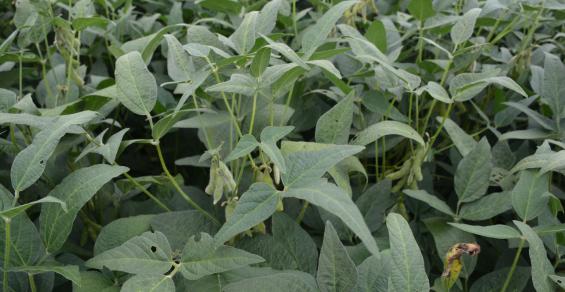Times are changing with more Southern farmers switching to indeterminate varieties.
Soybean farmers from across the country all ask the same question: What maturity group am I going to plant?
Farmers in the North and Midwest tend to plant indeterminate soybeans while farmers in the South have traditionally planted determinate soybeans. But times are changing with more Southern farmers switching to indeterminate varieties.
Indeterminate soybeans will flower for two to three weeks longer than determinate varieties and can continue to flower while pods are still developing. Determinate soybeans cease vegetative growth soon after flowering begins.
Farmers in the Central and Northern United States generally plant maturity groups 0 to IV. While soybean farmers in the South traditionally plant maturity group V and higher. Historically, lower numbered maturity groups were planted in the extreme northern United States and the numbers become progressively higher moving South to the Gulf Coast states. Later group soybeans are often determinate varieties while the earlier maturing varieties are often indeterminate.
In a recent webinar, Extension soybean specialists from across the United States who are part of the United Soybean Board’s Science for Success program cleared up some of the misconceptions across soybean stages. They offered guidance on the best soybean maturity groups to plant.
Killing frost
In Ohio, Laura Elizabeth Lindsey, Extension soybean and small grains specialist with The Ohio State University, notes that the state agronomy guide recommends that regardless of planting date, farmers should plant the latest relative maturity date that won’t die in a killing frost, which can vary from year to year.
“We’re looking at May planting dates in Ohio as normal planting dates. Really, the effect of relative maturity is not that large. We see yield declines maybe in northwest Ohio if we go to maturity group II. Usually, there is a wide range where we can still maximize yield. If we plant later that’s where it becomes really important to plant that latest maturing variety possible that won’t die in a frost,” Lindsey said.
In Michigan, Michigan State University Extension Soybean Specialist Manni Singh points out that research in the state shows soybeans planted early in the end of April do benefit by turning to an early maturing variety.
“The way we are getting the yield bump is we are increasing the number of nodes, we’re getting more number of seeds per unit area and we are getting a little bit longer reproductive phase, so we are able to maintain the reach of those more number of beans that we are getting in a unit area. Once we hit May 10 or so, it doesn’t really make a difference, and we’re seeing a lot of variability in the data that regardless of the maturity group, ” Singh said.
University of Minnesota Extension Soybean Specialist Seth Naeve said maintaining good conditions for seed fill is key for improved soybean yields. He said maturity group is critical for this because of the different set of timings of the different maturity groups.
“We’ve got more nodes in later maturities. We have a potential for a larger window for seed filling so that allows us a greater seed number. The challenge we got with longer maturities is that we may not fully fill those seeds,” he said.
Indeterminates in Arkansas
University of Arkansas Extension Soybean Specialist Jeremy Ross highlighted an extensive study conducted from 2012 to 2014 that examined planting dates and soybean maturity groups at 10 locations across the Mid-South. Ross said the study changed the way farmers in the area looked at maturity groups.
Ross noted that 10 to 15 years ago, more than 1 million acres of wheat were planted in Arkansas that was double-cropped with soybeans. In that situation, the university recommended farmers plant determinate varieties, such as group Vs late-season soybeans, because they can withstand the stress of late planting. But things changed as less and less wheat acreage was planted in Arkansas.
“That study that was conducted from 2012 to 2014 really kind of changed the way we thought about this. Coming out of that study it showed that group IVs had better yields than IIIs, Vs, and VIs,” he said.
In South Carolina, Michael Plumblee, Clemson University Extension corn and soybean specialist, said famers are still predominantly growing determinant soybeans. He points out that South Carolina farmers would have to change their management system if they switched to indeterminate soybeans.
“We really have to be on top of them with a timely harvest. We typically get hurricanes in the fall and the indeterminates don’t always weather as well for us as a determinate bean. Sometimes they don’t fit our production practices where we are trying to harvest other crops like peanuts and cotton. Do we have time to get the combine out and harvest indeterminate soybeans as well ?” he said.



